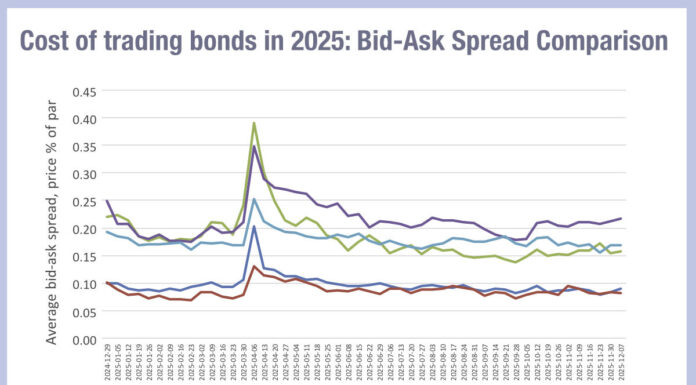According to the buy-side, liquidity no longer meets the old textbook definition – the ability to buy or sell, at a given price, size and timescale. It’s now a market factor that combines geopolitical risk, technology and regulation.

“It’s strange to talk about macro versus liquidity, but now the liquidity of the market is just a key driver”, said Jacques Lemoisson, CIO & Founder at Gate Capital Management in Switzerland, speaking at one of two Navigating Fixed Income Liquidity Dynamics panels at FILS. As an example, he points to recent developments in China. “The structure of the market just evolved during the previous months, warning us that something will happen. They just reduce the visibility in the market, in the order books. A country takes a kind of action, geopolitical action, to control flows and liquidity. Some countries use regulatory change as a weapon.”

“The challenge for us to address this new type of player and new type of volatility regime”, noted Eric Heleine, head of trading at Groupama Asset Management. “Be sure that your infrastructure has the capabilities to aggregate the right information, to clean the lab, to analyse the noise versus the trends, to reconfigure in quasi real-time our automation workflow, to take into consideration the evolution of the noise.”
“We want to provide smart content and smart intelligence to PMs, to educate them, to explain to them that the market can change conditions, and that means that they as manager can execute change”, added Heleine. “Because we can be more aggressive in another book, or aggressive in the market to sweep the liquidity, because we can think that the price action can move away from us. And this kind of metric, we need to normalize”.
A more comforting message came from the sell-side, at least in developed country credit and rates markets. Product innovation, technology and new market entrants are boosting bond liquidity, said participants. But buy-side firms question what this means for them.
Talking to the sell-side, bond liquidity has entered a new golden age. Electronic trading platforms have allowed new entrants such as Citadel Securities and Jane Street to grab market share from traditional bank incumbents, offering algo-driven solutions. Yet the buy-side is sceptical, particular since relationships with bank primary desks and syndicates need to be preserved.
“Liquidity is in the eyes of the beholder”, said one buy-side trader. “Are we talking about two-way liquidity for small size? Are we talking about one way liquidity for fixed income? If you’re a fixed income person, usually you’re looking for one side of the trade.”
“Liquidity has a cost, whether we like it or not. And that cost comes from the mismatch between two investors about timing, about size. And someone has to take that mismatch. And obviously it has a cost for someone lending their balance sheet, meaning capacity, risk relationships and facilitating the trade”.
Meanwhile, exchange-traded passive bond funds offered by the likes of Blackrock require large fixed income baskets to be constantly rebalanced, providing a new source of liquidity for the market. The trader concedes that ETFs have certainly improved liquidity for individual credits. Referring to the iShares European corporate bond ETF, that trades with ticker ‘IEAC’,
He said “There’s about 26 BMW bonds in that ETF from three different entities. Most of these bonds would not be liquid if there was no ETFs, because people would concentrate on three and four of them.”
©Markets Media Europe 2024
©Markets Media Europe 2025












